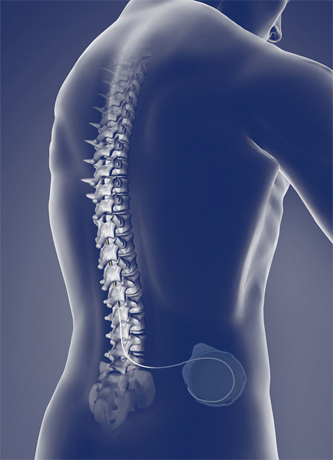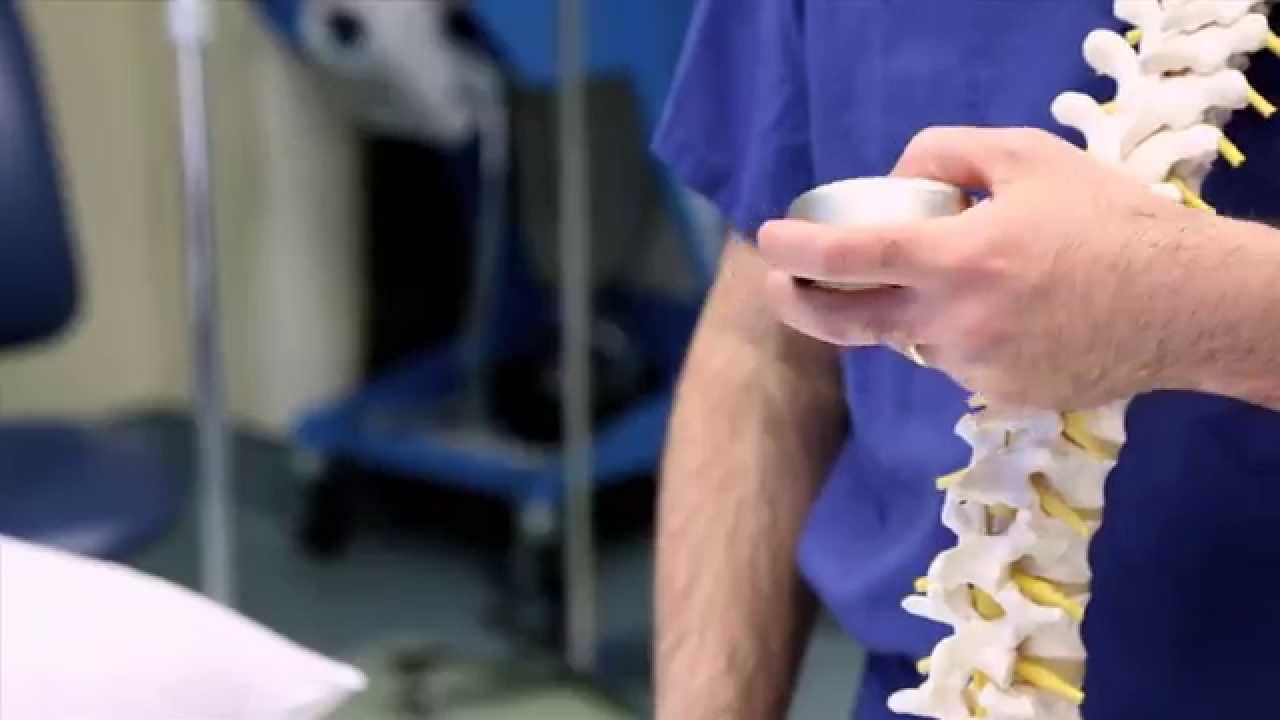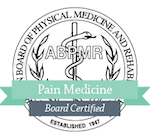Intrathecal Pump Implantation
Intrathecal Pump Implantation
The main aim of an Intrathecal Pump Implantation is to provide relief for extreme pain in the lower back. It transports medication directly to an area called the “Intrathecal space” which sends signals to the brain to alert the feeling of pain.
The “Intrathecal space” is located at the rear of the back in the area that surrounds the spine. Although medication can be used – many researchers believe that using an Intrathecal Drug Pump is much more efficient as the area can be targeted immediately without waiting for digestion.

How would an Intrathecal Pump be used?
With a metal casing, the pump is no bigger than the palm of your hand. It is implanted under the skin of the abdomen during surgery.
- The patient is given anesthesia
- The back and stomach are typically shaved where the catheter (small tube) needs to be placed.
- A small incision will be made in the center of the back, exposing the vertebrae.
- The catheter will be placed around the torso region where the pump will be implanted.
- The incision will be sealed.
- The catheter will carry the pain medication from the inserted pump to the region that is most painful.
- After this is complete, there may be follow-up tests such as x-rays and blood tests.
- You need to book appointments for medication refills quite frequently
It works by numbing the area so that symptoms weaken.
Benefits of using an Intrathecal Pump
One of the major benefits of using an Intrathecal Pump is that it uses a smaller dose than what is needed with oral medication. This reduces patients building up a tolerance to the drug.
It also reduces common side effects that are usually associated with taking medication (for example, headaches, constipation, and fatigue.)
Due to the Pump being able to target the root of the pain almost immediately, there have been reports of a faster recovery time post-operation.

Side Effects
After the surgery, many patients feel discomfort. Some patients experience severe headaches caused by the spinal pain however limiting daily activity easily solves this. For this side effect, drinking caffeine is recommended.
Other side effects are very rare – including infection and the pump stops working. However again, this happens to only a small amount of people. The drugs themselves can cause side effects similar to any other sort of drug – nausea, mood swings and constipation however these aren’t long lasting.



